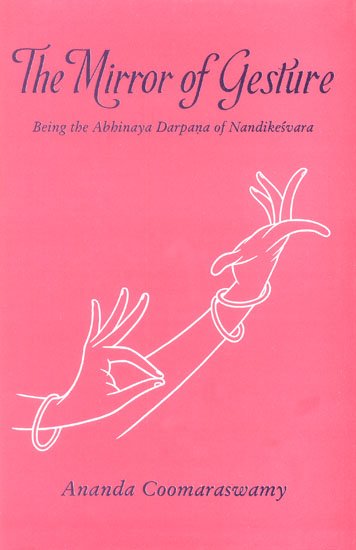Abhinaya-darpana (English)
by Ananda Coomaraswamy | 1917 | 16,981 words | ISBN-13: 9788121500210
The English translation of the Abhinaya-darpana (“the mirror of gesture”) by Nandikeshvara: an encyclopedic manual of the art of gesticulation. It belongs to a wide range of literature known as Natya-shastra: the ancient Indian art of dramatic performance, theatrics, dance and music. The Abhinaya Darpana is an abridgement of the Bharatarnava, a m...
Chapter 6 - Twenty-four Movements of the Head
The twenty-four Heads following are mentioned elsewhere, by Bharatācārya and others:
- Dhuta,
- Vidhuta,
- Ādhuta,
- Avadhuta,
- Kampita,
- Akampita,
- Udvāhita,
- Parivāhita,
- Añcita,
- Nihañcita,
- Parāvṛtta,
- Utkṣipta,
- Adhomukha,
- Lolita,
- Tiryonnatānnata,
- Skandhānata,
- Ārātrika,
- Sama,
- Pārśvābhimukha,
- Saumya,
- Ālolita,
- Tirascīna,
- Prakampita,
- Saundarya.
Dhuta: moving the head slowly and regularly to and fro. Usage: an empty place, looking to one side, failing to find sympathy, astonishment, dismay, indifference, rejection.
Vidhuta: the same head, moved quickly. Usage: cold, heat, fear, the first moment of drinking liquor.
Ādhuta: slightly raising and turning the head sharply. Usage: everything, looking at one’s own body, looking at the sides with an upward glance, ability to perform an action, dignity.
Avadhuta: inclining the head sharply. Usage: saying “Stay”, pointing out a place, asking a question, summoning, conversation.
Kampita: raising the head high and shaking it. Usage: recognition, indignation, consideration (yitarka), threatening, hastening, questioning.
Akampita: the same movement slowly. Usage: something in front, enquiry, instruction (upadeśa), one’s own opinion, narration.
Udvāhita: raising the head sharply. Usage: saying “I can”, dignity.
Parivāhita: turning the head in a circle. Usage: shamelessness, misapprehension, keeping silence, recalling (the appearance etc. of) the beloved, astonishment, smiling, joy, horripilation, giving pleasure, reflection.
Añcita (bent): the neck is slightly bent to one side. Usage: regarding anything vile, being in love, fainting, etc., gazing at the middle of the lower lip.
Nihañcita: raising the shoulder, and touching it with the head. Usage: pleasure at seeing the beloved (vilāsa), graceful posing (lalita), affected indifference (bibboka), hysterics (kilakiñcita), rapture at being reminded of an absent lover (moṭṭayita), feigned anger (kuṭṭamita), modest silence (mauna), affectation of being unmoved (stambha).
Parāvṛtta: the head is averted. Usage: saying “Do this”, aversion, modesty, etc., relaxing the features, following one who has gone aside, looking back.
Utkṣipta: the face is uplifted. Usage: things moving in the sky.
Adhomukha: the head is bent. Usage: modesty, sorrow, bowing.
Lolita: the head unsteady, the eyes languid as if from excess of pride. Usage: sleepiness, obsession, intoxication, faintness.
Tiryonnatānnata: the head is moved up and down. Usage: affected indifference.
Skandhānata: the head is rested on the shoulder. Usage: sleep, intoxication, fainting, anxiety (cintā).
Ärātrika: turning the head to both sides, just touching the shoulders. Usage: astonishment, inferring the opinions of others.
Sama: natural pose of the head. Usage: expressing normal circumstances.
Pārśvābhimukha: the head is turned aside in looking at persons on one side.
Saumya: motionless. Usage: when the dance (nṛtya) is to be begun.
Ālolita: the head is moved about freely. Usage: when flowers are offered in the hands, in Cārī-naṭana, charm (lavana).
Tirascīna: looking up on both sides. Usage: in dances showing modesty, and that called Mukhacārī, and such suitable occasions.
Prakampita (waving about): repeatedly moving the head forward and to both sides. Usage: the marvellous (adbhuta rasa), song, composition (prabandha), bee, the enemy’s mode of fighting.
Saundarya (elegance): looking up and down, the trunk also bent. Usage: expressing a cause (kāraṇa), in dances showing the “bee” hand, yoga-practice.
